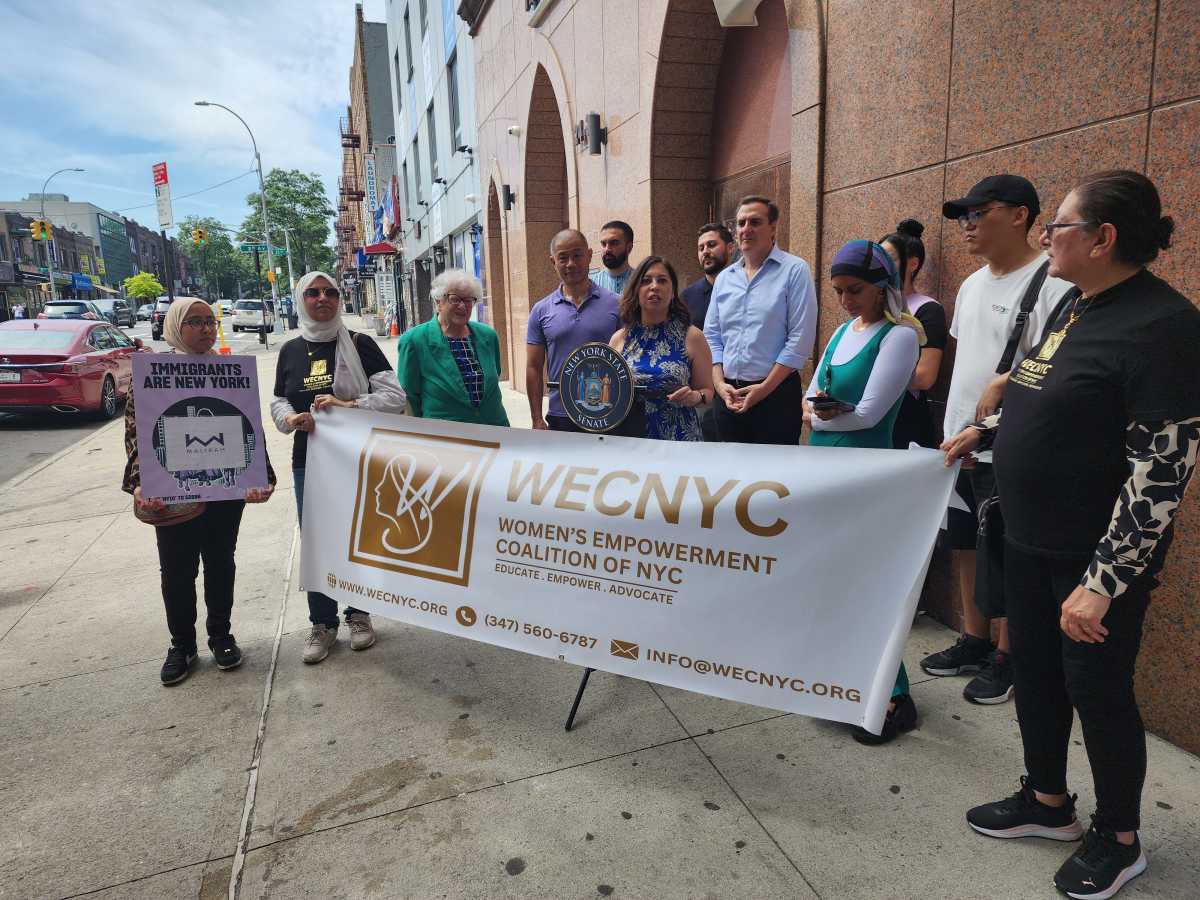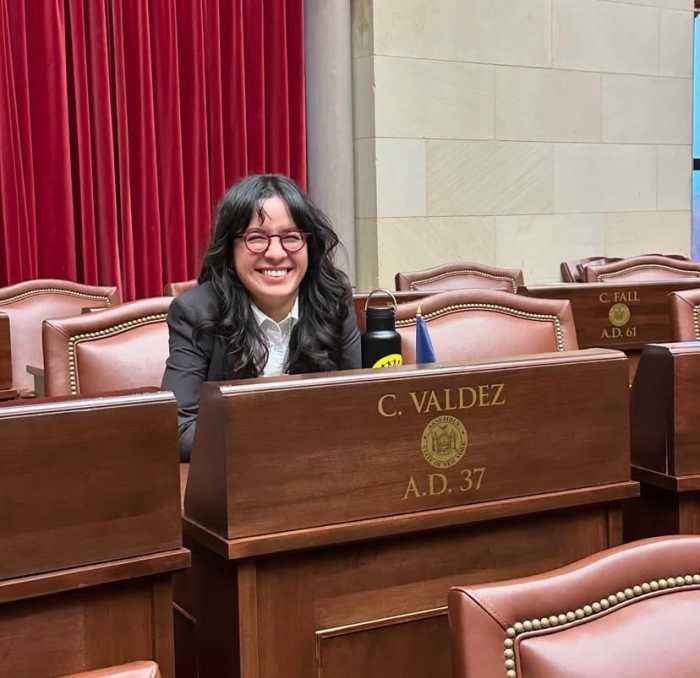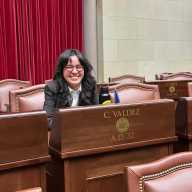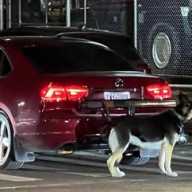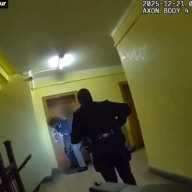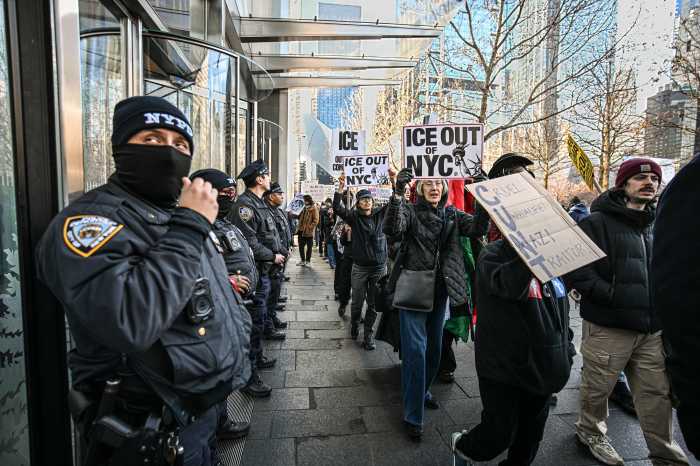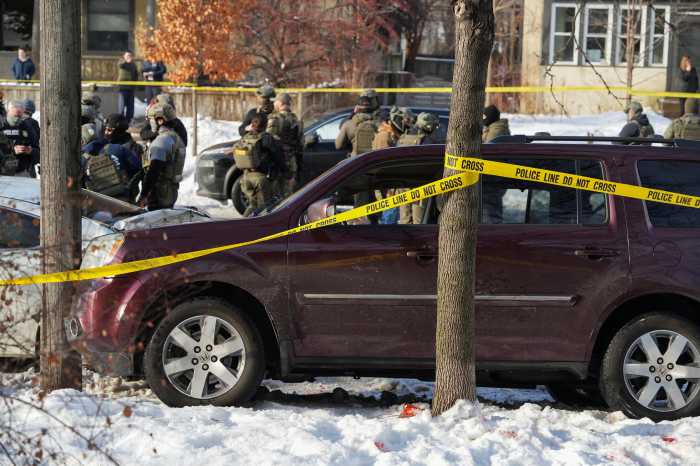Several state officials who represent districts in western Queens held a rally outside a mosque in Astoria Thursday, June 20, in support of legislation that would classify people of Middle Eastern and North African (MENA) heritage as part of a specific demographic group—instead of being broadly categorized as white.
The rally, held outside Al-Iman Mosque in Astoria, was attended by several state senators and assembly members who called on Gov. Kathy Hochul to sign legislation into law that would designate MENA as a distinct demographic category, and thereby improve government data collection on members of that community.
A bill calling for the demographic classification has passed both the Senate and Assembly and needs Hochul’s signature to become law.
State Sen. Michael Gianaris and Assembly Member Jessica González-Rojas, who sponsored the bill in the Senate and the Assembly, respectively, called for the rally in cooperation with other legislators and members of the MENA community, under the leadership of Rana Abdelhamid, director of Astoria-based Malikah.
The bill’s co-sponsors were also present, including Queens representatives state Sens. John Liu and Toby Ann Stavisky and Assembly Member Zohran Mamdani.
Other speakers include Abdulahmed from Malikah, Osama Tawi from the New York Muslim Organizing Collective, Christine Serdjenian from the Armenian-American Action Network, Jeemin Cha from the Coalition for Asian American Children and Families, Youssef Mubarez from YAMA Action and Weam Ali from the Women Empowerment Coalition.
Should it become law, the MENA Bill would require state agencies, boards, departments and commissions that collect demographic data to separate people of Middle Eastern and North African backgrounds from being deemed white.
People from the Middle East and North Africa have traditionally been categorized as a subgroup of white in government data, despite the various shades, colors, and experiences these people have. The designation has also disqualified them from minority programs and benefits.
González-Rojas said the way data is collected now is an issue for MENA community members since they are classified as white. The classification makes it hard for government officials to determine whether these people are being disfranchised in terms of redistricting, health, and environmental factors.
González-Rojas believes the governor will sign the bill, noting that a similar bill that disaggregates the Asian and Pacific Islander communities into more subgroups was signed into law.
She also said she is happy an executive order was passed by the president that makes provision for a separate MENA category in the next U.S. census, which will take place in 2030.
Nevertheless, “That is too long to wait, and we know this community needs to be seen and counted now,” said González-Rojas.
Gianaris said it is crucial to count the hundreds of thousands of New Yorkers who are from the Middle East and North Africa separately. He said that it is currently difficult to determine their numbers or the services they might need, noting that government officials can’t form a good policy without proper information.
Gianaris said members of the MENA Coalition brought the bill to their attention, and they worked together to make it happen.
Walking down Steinway Street, near where the conference was held, Amal Asad, 25, a Palestinian American nurse who was born and raised in Bay Ridge, Brooklyn, said most people think that she is Latina. She said that when people look at her, nobody believes she is white.
Asad said the proposed bill will be a welcome change for her and all MENA people.
“I don’t feel white at all; I feel Middle Eastern and Palestinian,“ Asad said.

